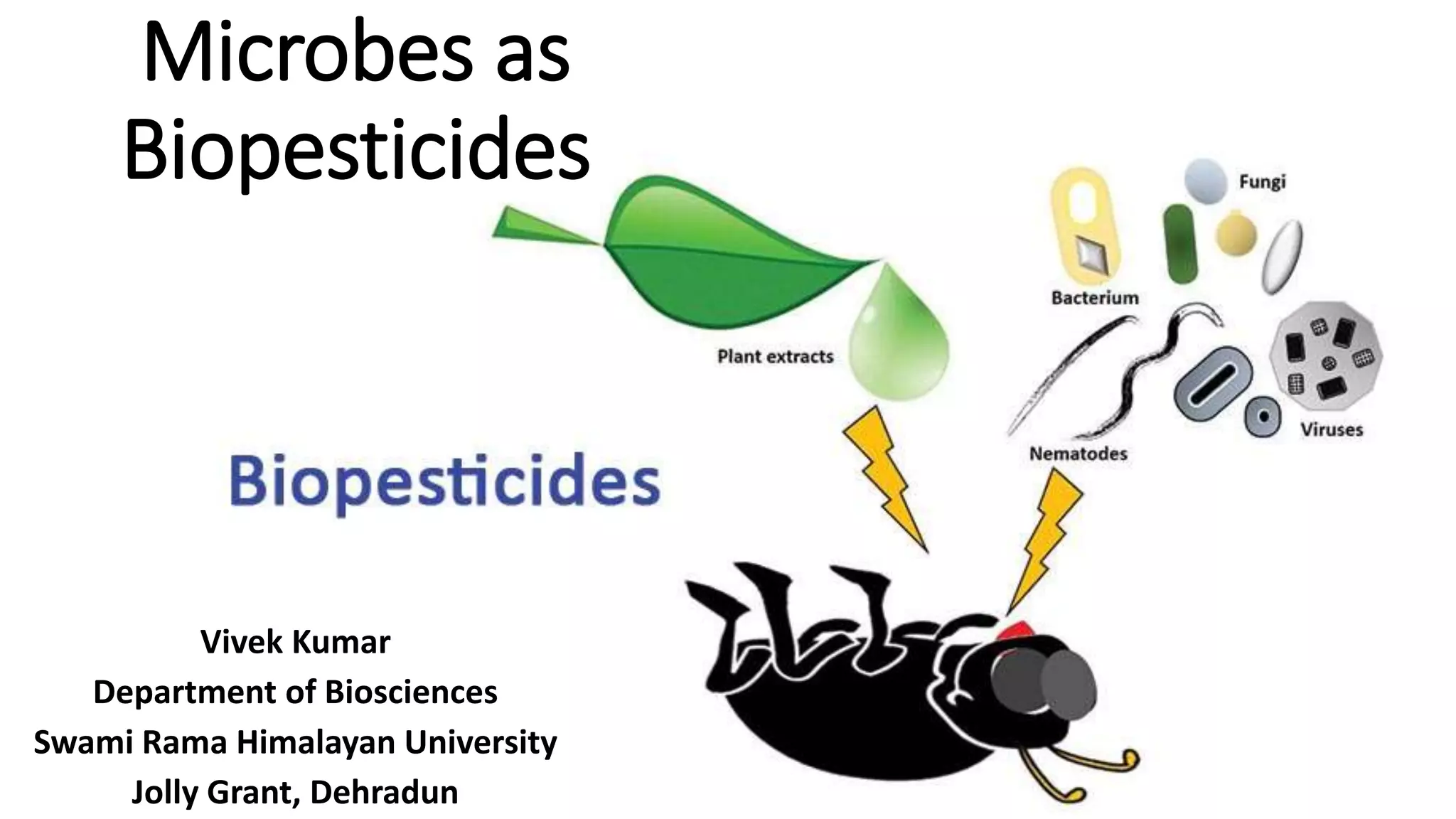This document discusses biopesticides, which are pesticides derived from natural materials like plants, bacteria, and minerals. It describes different types of biopesticides including microbial biopesticides which use microorganisms like bacteria and fungi to control pests. The document outlines advantages like lower toxicity compared to chemical pesticides as well as disadvantages like limited effectiveness against multiple pest types. It also discusses recent advances in biopesticide development through recombinant DNA technology.





![• Microbial pesticides consist of a microorganism (e.g., a
bacterium, fungus, virus or protozoan) as the active
ingredient.
• Microbial pesticides can control many different kinds of
pests, although each separate active ingredient is relatively
specific for its target pest[s].
• For example, there are fungi that control certain weeds and
other fungi that kill specific insects.
• The most widely used microbial pesticides are subspecies
and strains of Bacillus thuringiensis, or Bt.](https://image.slidesharecdn.com/biopesticides-210507053702/75/Biopesticides-6-2048.jpg)




















